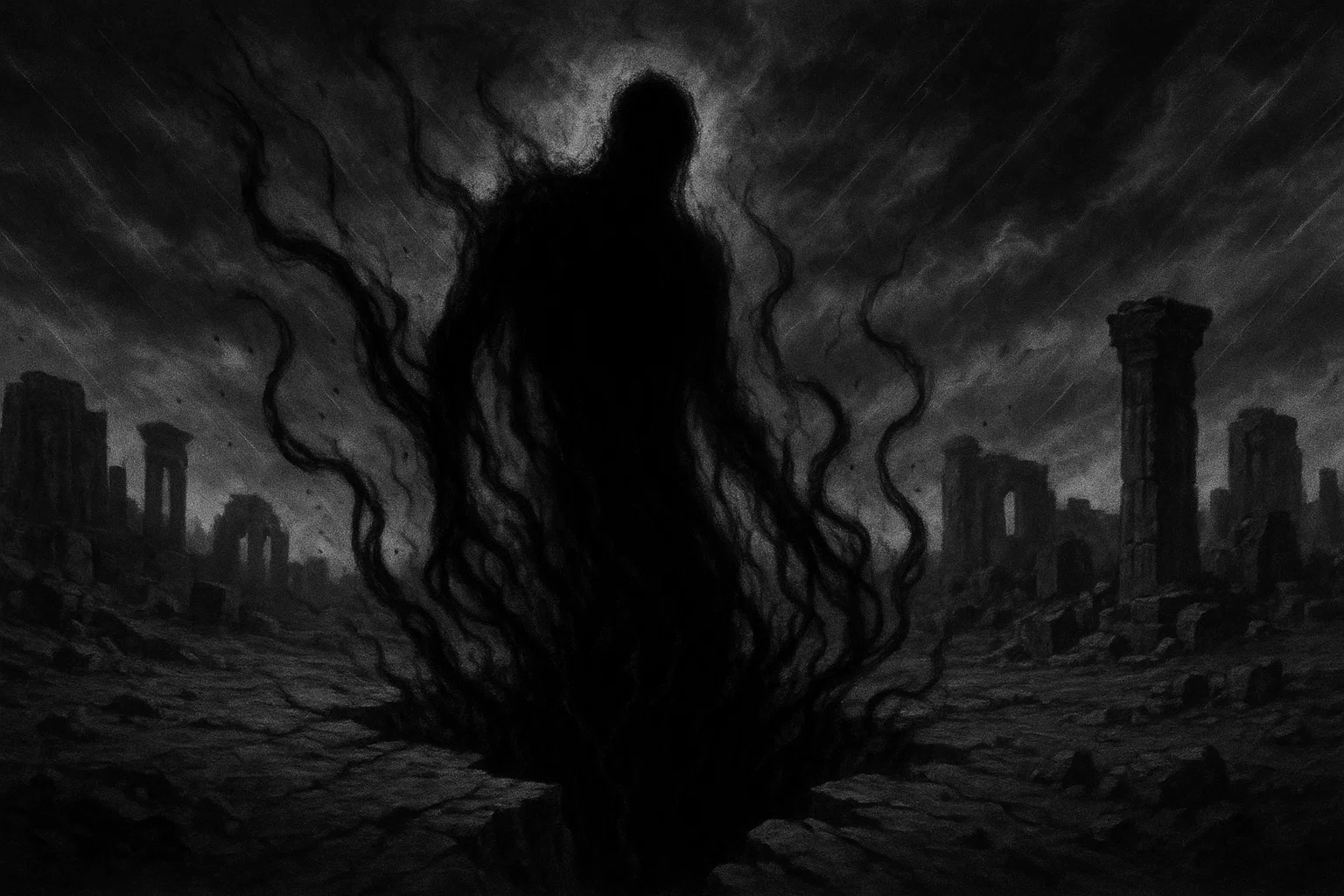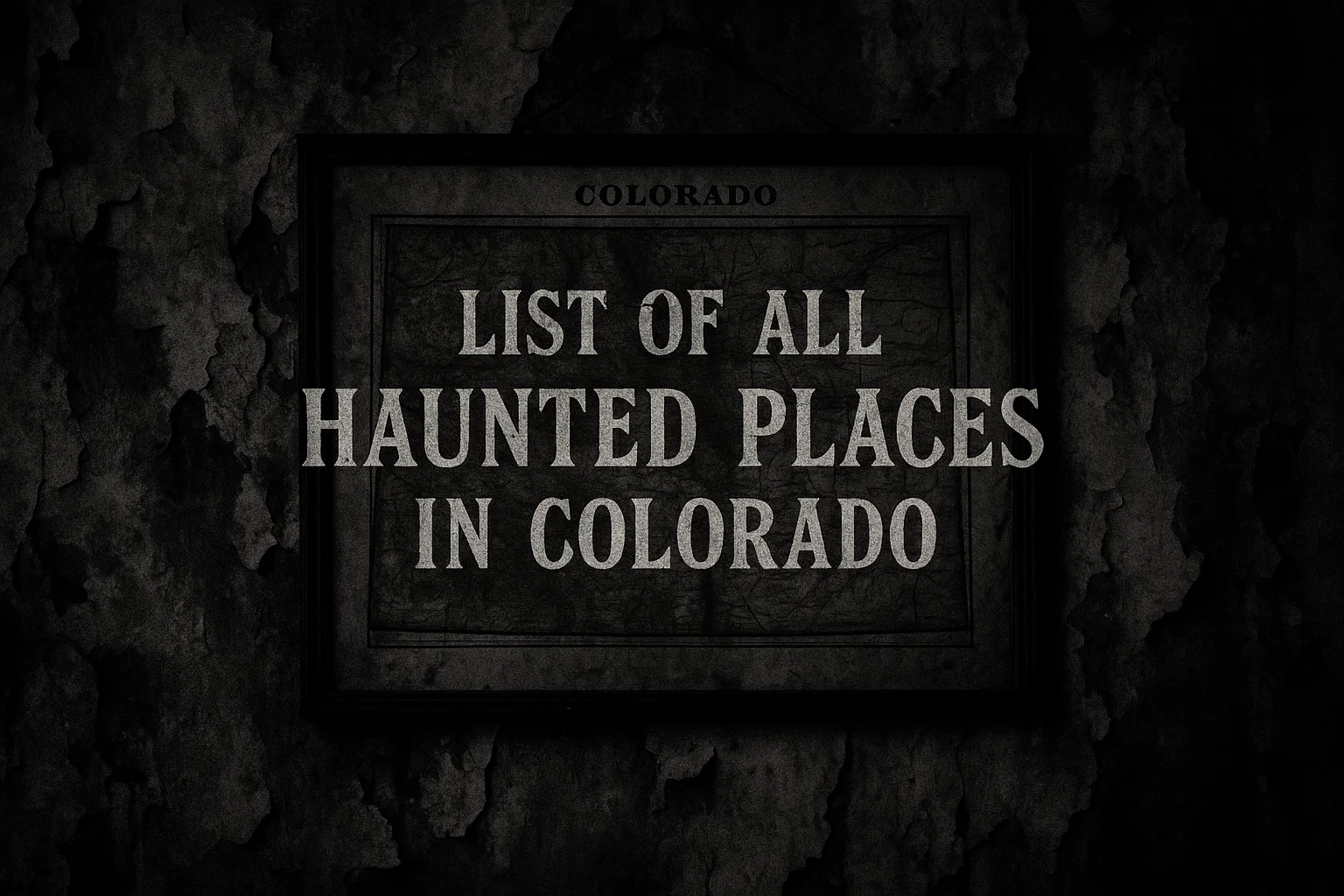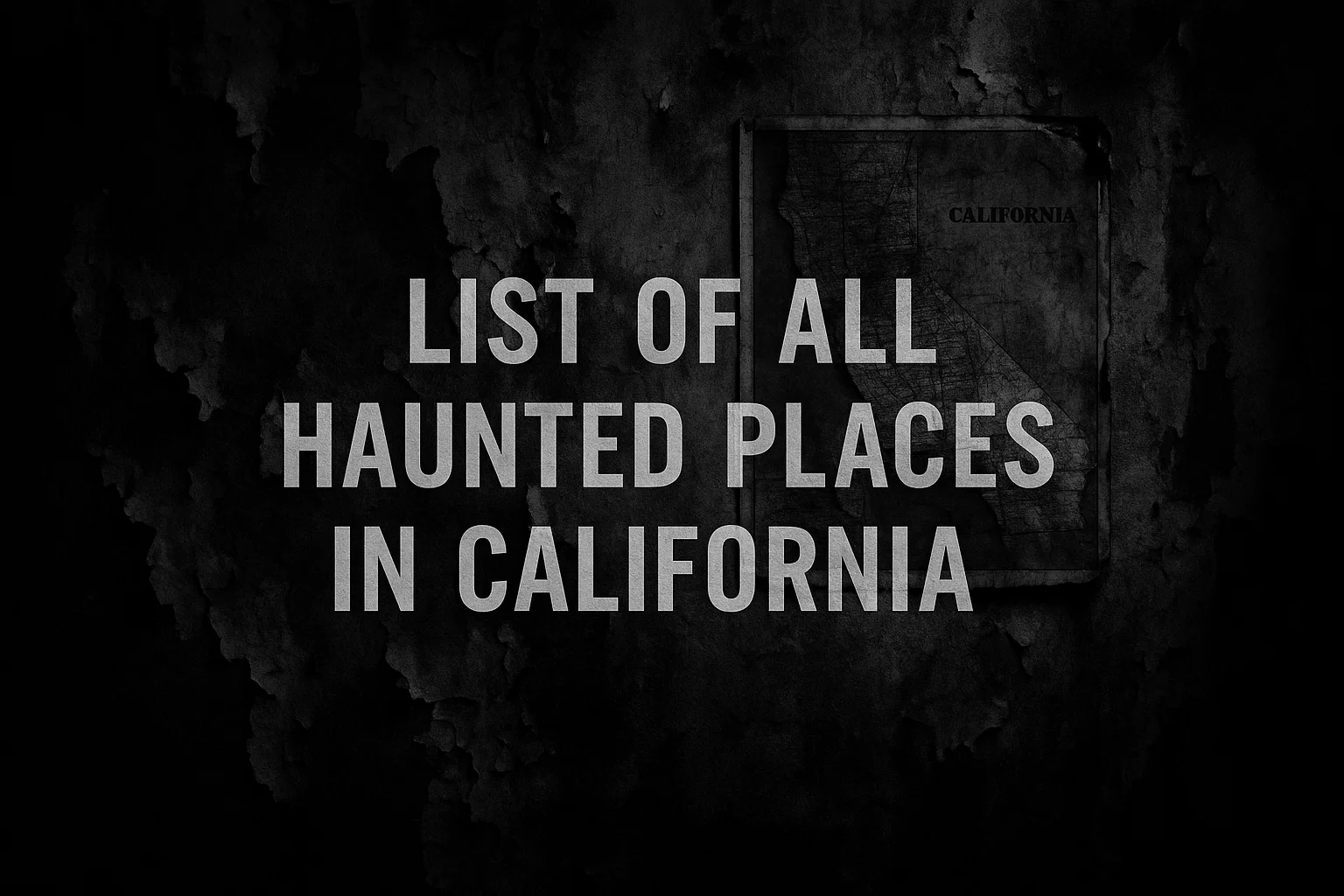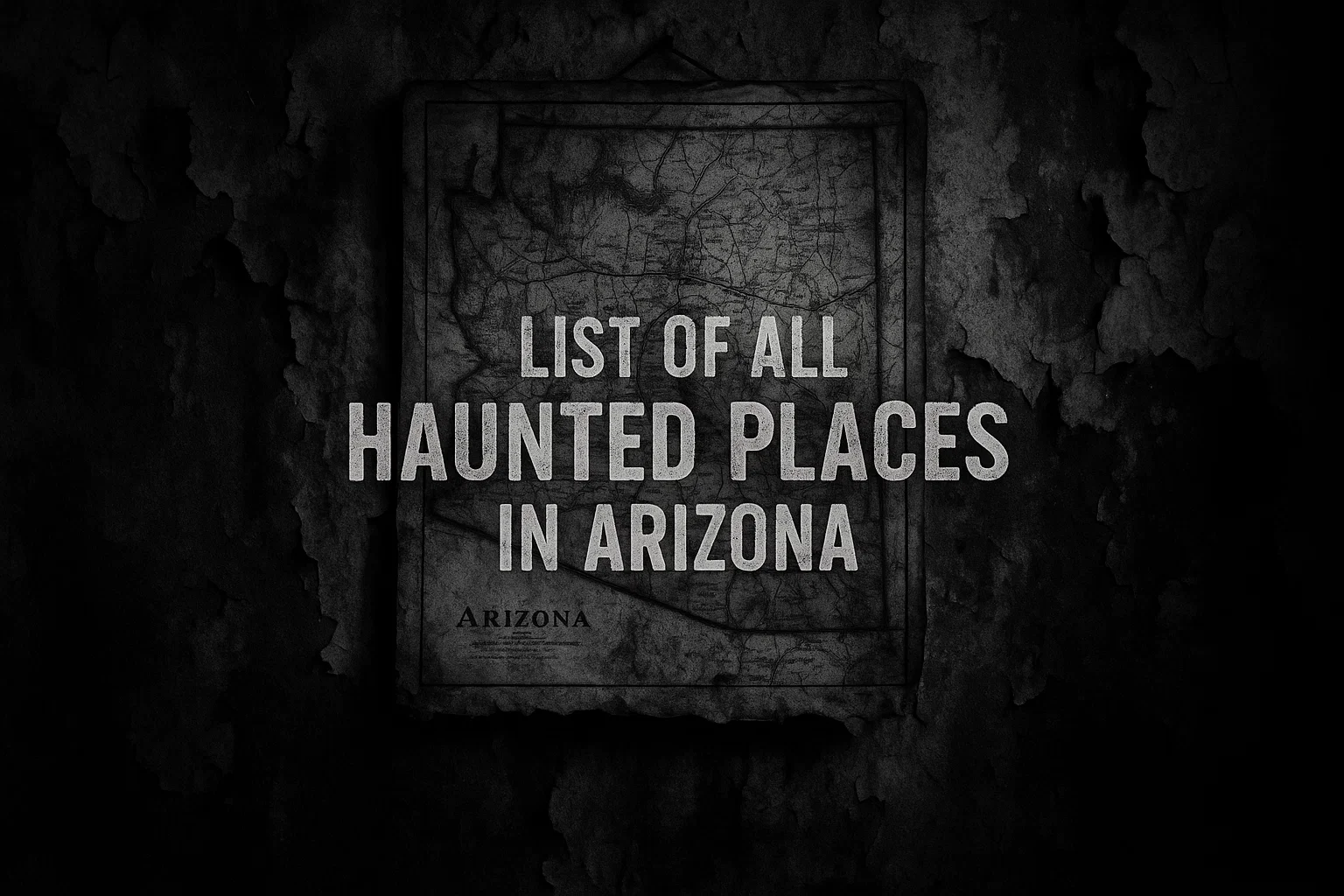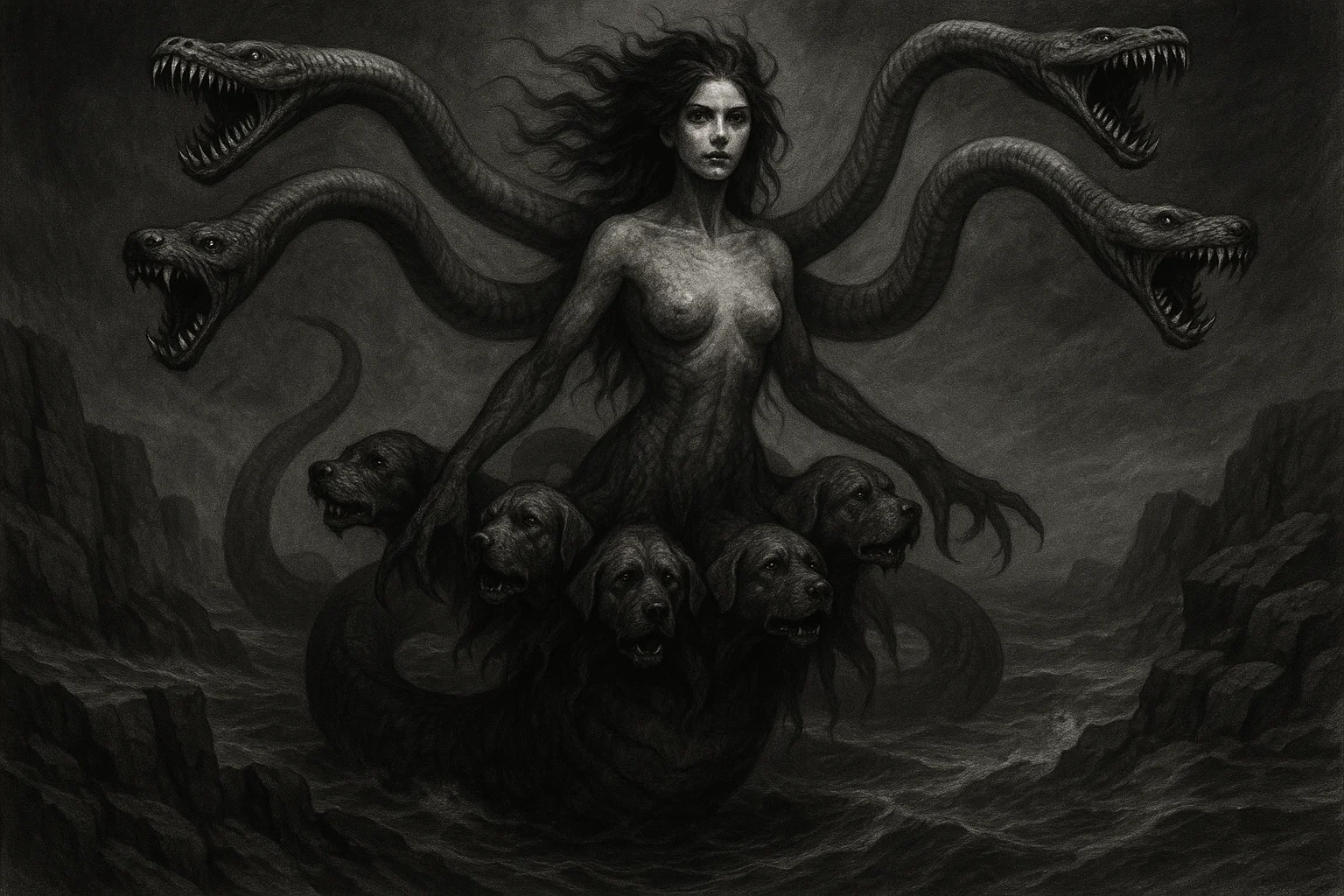In the desolate expanse of ancient Mesopotamia, where scorching winds carried omens of doom across the cradle of civilization, Hanbi arose as the quintessential embodiment of unbridled wickedness. This Sumerian demon Hanbi, often shrouded in the impenetrable mists of forgotten lore, reigned supreme as the architect of chaos, spawning legions of malevolent spirits that plagued humanity with unrelenting torment.
As the father of Pazuzu and sovereign of all evil forces, Hanbi‘s insidious influence permeated the underworld’s depths, tempting mortals toward moral ruin and societal collapse through whispers of forbidden desires and staggering disarray.
Summary
Key Information
| Category | Details |
|---|---|
| Name | Hanbi (primary Sumerian form); Hanpa, Hanbu, Hanpu (Akkadian variants and linguistic evolutions); Lord of the Udug; Staggering One; Perverted One |
| Title | Lord of Evil; King of the Evil Lilû Demons; Sovereign of All Malicious Forces; God of Chaos and Malevolence; Ruler of Shadow-Born Terrors |
| Gender | Male |
| Role | Primordial instigator of chaos and misfortune; Commander of malevolent udug and lilû spirits; Progenitor of destructive demonic offspring; Corrupter of human souls through intangible dread and existential voids |
| Hierarchy | Apex overlord in the chthonic realm of Kur; Supreme king over the udug-ḫul (evil demons) and lilû wind demons; Preeminent figure in Mesopotamian demonology, unbound by higher infernal structures in preserved texts |
| Servitors | Udug-ḫul (evil personal demons causing sickness and madness); Lilû demons (wind-borne malevolents); Rabisu (lurking ambushers); Alu (night phantoms); Gallu (soul-haulers); Offspring such as Pazuzu (wind demon king) and potentially Humbaba (forest guardian monster) |
| Superior Demon | None explicitly documented; As a shadow-born entity from the underworld’s primordial voids, Hanbi operates as an autonomous force of evil, predating formalized hierarchies in later demonic traditions |
| Powers | Mastery over formless shadows inducing decay and madness; Generation of evil progeny to propagate chaos; Infusion of staggering malice causing disorientation and corruption; Command of poisonous silences and unseen terrors; Influence over calamitous winds and plagues via servitors |
| Appearance | Ethereal and formless void; Swirling shadow devoid of tangible shape; Enveloped in oppressive darkness, toxic silence, and corrosive tendrils; Manifests as a staggering silhouette that warps reality and erodes the senses |
| Etymology | Rooted in Sumerian terms evoking “shadow” or “obscurity”; Akkadian variants like Hanbu imply “staggering one” or “perverted one”; Connected to concepts of nameless terror and chthonic perversion in bilingual incantations |
| Associated Figures | Pazuzu (son, demon of winds and pestilence); Humbaba (possible son or kin, monstrous guardian); Ereshkigal (underworld queen, tangential chthonic link); Nergal (plague god, shared domain over maladies); Lamashtu (rival demoness targeted by progeny) |
| Weaknesses | Ritual exorcisms invoking gods like Enki or Marduk to impose order; Protective talismans and amulets channeling divine light; Communal incantations restoring identity and harmony; Exposure to structured cosmic forces like daylight or purified waters |
| Opposing Angel/Saint | Enki (god of wisdom, exorcism, and creation); Marduk (slayer of chaos, bringer of order); Asalluḫi (purifying aspect of Enki); Ningirsu (warrior god combating evil forces) |
| Equipment/Tools | Intangible shadows as weapons of erosion; Whispers of corruption; Cuneiform curses inscribed on tablets for invocation or banishment; No physical artifacts, but associated with void motifs in prophylactic seals |
| Pantheon | Mesopotamian (encompassing Sumerian, Akkadian, Babylonian traditions); Chthonic underworld subgroup of demonic entities and malevolent spirits |
Etymology
The name Hanbi originates from the rich linguistic tapestry of ancient Sumerian, where it conjures images of lurking obscurity and intangible dread, fundamental to Mesopotamian demonology.
Scholars derive it from proto-Sumerian roots associated with “shadow” (gišimmar or similar phonetic constructs), symbolizing an entity that thrives in the absence of light and form. This etymological foundation positions Hanbi as more than a mere label; it encapsulates the philosophical terror of the unseen, a “nameless one” whose very utterance in rituals could summon or repel waves of malice.
As civilizations transitioned to Akkadian dominance around the second millennium BCE, the name evolved into variants like Hanpa or Hanbu, incorporating Semitic nuances of perversion and instability.
The term “Hanbu” specifically translates to “the staggering one,” evoking a disorienting force that causes victims to falter morally and physically, aligning with Hanbi‘s role in inducing chaos. Bilingual tablets from the Old Babylonian period, such as those in the udug-ḫul series, link Hanbi to ḫul (evil) and udug (spirit), reinforcing his identity as the linguistic progenitor of all chthonic horrors.
Comparative linguistics further enriches Hanbi‘s etymology, drawing parallels to Semitic concepts in neighboring cultures, such as Hebrew shedim (shadow demons) or Arabic shaitan (perverters).
These connections suggest a broader Near Eastern influence, where Hanbi‘s name embodies the inversion of divine order— a “perverted one” who twists creation’s essence. In exorcistic contexts, precise pronunciation of Hanbi‘s name was crucial, as missteps could amplify his corrupting stagger, highlighting how etymology intertwined with magical practice.
Deeper analysis reveals potential ties to ancient king lists, where “Anbu” (a precursor form) appears as a royal name, speculatively conflating into Hanbu. This implies Hanbi‘s origins in deified malice, blending human history with demonic archetype. Such layers make Hanbi‘s etymology a gateway to understanding Sumerian demon nomenclature, where names weren’t arbitrary but potent vessels of power, capable of binding the formless to the mortal realm.
In essence, Hanbi‘s name evolution mirrors the cultural shifts from Sumer to Babylon, adapting yet retaining its core dread. This linguistic journey underscores his timeless role as the “staggering pervertor,” a term that tempts the curious to invoke, only to ensnare them in eternal shadow.
You May Also Like: Namtar: The Demon of of Death and Disease
What Does the Demon Hanbi Look Like?
Hanbi eludes precise visualization, embodying the ultimate horror of the indefinable in Mesopotamian mythology. Descriptions from ancient incantations portray him as a formless abyss, a vortex of inky blackness that devours light and muffles sound, leaving behind a trail of poisonous quietude and decayed reality. His “presence” is felt rather than seen—a staggering shadow that distorts the air, causing flesh to wither and minds to fracture under its intangible weight.
Distinct traits amplify his ethereal menace: tendrils of corrosive darkness that seep into pores, inducing rot; bulging voids where eyes might lurk, reflecting victims’ deepest fears; and an aura of perpetual eclipse that bends perceptions into nightmares.
Prophylactic artifacts from Assyrian sites depict his influence through abstract voids amid guardian figures, never a full form, emphasizing Hanbi‘s terror as the void itself—one that corrupts by forcing the imagination to conjure its own demise.
Historical and Mythological Background
The demon Hanbi‘s roots delve deep into the primordial chaos of Mesopotamian mythology, emerging from the shadowy underbelly of Sumerian cosmology around the third millennium BCE.
As civilizations flourished along the Tigris and Euphrates, Hanbi symbolized the inherent malice woven into creation’s fabric, a counterforce to the ordering gods like Anu and Enlil. His origins trace to the underworld realm of Kur, a desolate void predating human sin, where he spawned as a shadow-born entity, unbound by the dingir (divine) hierarchies that governed benevolent deities.
This chthonic genesis sets Hanbi apart, portraying him as an autonomous evil not created by gods but inherent to existence’s dark side. Connections to other ancient figures abound: speculative links to Anbu from the Sumerian King List suggest a blurred line between demonic overlords and deified kings, implying Hanbi‘s malice influenced early monarchic concepts of tyranny.
Beyond Mesopotamia, parallels emerge with Egyptian Set (chaos god), Zoroastrian Angra Mainyu (destructive spirit), and even Hittite storm demons, hinting at a shared Indo-European archetype of staggering perversion that diffused through trade routes.
In broader Near Eastern lore, Hanbi‘s influence echoes in Hebrew shedim (shadowy adversaries) and Islamic shaitan, entities that pervert divine will, underscoring cultural exchanges during the Bronze Age.
These ties position Hanbi as a prototype for global demonic figures, his formless dread inspiring tales of unseen corruptors worldwide. Yet, within Mesopotamia, he remains tied to udug spirits, personal demons that embody everyday terrors, reinforcing his role as the eternal instigator of misfortune.
The Genesis of Pazuzu
Central to Hanbi‘s mythology is the birth of his son Pazuzu, chronicled in Akkadian incantations from the first millennium BCE. Amid the quaking mountains of the Zagros, Hanbi—the staggering lord—infused his shadowy essence into the winds, birthing Pazuzu as king of the lilû demons.
This event symbolizes evil’s propagation: Hanbi‘s seed ensures malice evolves, with Pazuzu‘s storms carrying paternal corruption across deserts, afflicting crops with famine and bodies with pestilence.
Expanded details reveal this “birth” as a ritualistic cataclysm, where Hanbi‘s formless void clashed with elemental forces, trembling the earth as recorded in bilingual tablets. Pazuzu emerged hybrid—canine-faced, winged, taloned—embodying Hanbi‘s perversion in tangible form.
The legend warns of inherited sin: mortals invoking Pazuzu for protection unwittingly invite Hanbi‘s deeper stagger, leading to moral erosion. This narrative, preserved in prophylactic amulets, highlights Hanbi‘s subtle dominion, where even “protective” progeny perpetuate his chaos.
You May Also Like: What Is an Edimmu? The Ancient Demon of the Unburied Dead
Humbaba’s Monstrous Guardianship
Fragmented Sumerian hymns link Hanbi to Humbaba, the cedar forest’s grotesque sentinel, possibly as father or kin.
In the Epic of Gilgamesh, Humbaba’s thunderous roar and terrifying visage guard Enlil’s sacred woods, but underlying texts suggest Hanbi‘s influence empowered this monster, infusing him with staggering malice to repel intruders. Humbaba’s seven auras of terror mirror Hanbi‘s udug legions, each layer a veil of corruption tempting heroes like Gilgamesh toward hubris.
Detailed accounts describe Humbaba’s creation: Hanbi‘s shadows seeped into the Lebanese cedars, birthing a hybrid beast with lion’s maw, serpent coils, and flame breath.
Gilgamesh and Enkidu’s slaying of Humbaba disrupts this guardianship, but Hanbi‘s essence lingers, cursing the victors with existential voids—Gilgamesh’s quest for immortality stems from this paternal taint. This legend expands Hanbi‘s reach beyond Kur, into nature’s wilds, where his perversion twists protection into predatory traps.
The Battle Against Formless Dread
The udug-ḫul incantation series (circa 1800 BCE) casts Hanbi as the antagonist in exorcistic dramas, where afflicted souls encounter his staggering void in visions. These “stories” depict Hanbi as the source of nameless plagues, his shadows infiltrating dreams to induce fevers and madness. Priests, invoking Enki, bind Hanbi through naming rites, forcing his retreat into Kur’s dust.
Elaborate details include symptoms: victims “stagger” with vertigo, echoing Hanbi‘s etymology, as his poison whispers erode willpower. One tablet recounts a king’s possession, where Hanbi‘s servitors unravel the court, tempting advisors to betrayal. Resolution comes via communal hymns, restoring order, but the legend warns: Hanbi‘s defeat is temporary, his malice ever-resurging like underworld floods.
Shadows in Descent Myths
Hanbi lurks peripherally in Inanna’s descent to Kur, where his udug enforce the underworld’s grip, staggering the goddess’s resolve. Expanded lore suggests Hanbi‘s whispers amplify Ereshkigal’s jealousy, tempting Inanna toward forbidden knowledge. This narrative details the seven gates: at each, Hanbi‘s shadows strip divine attributes, symbolizing corruption’s incremental creep.
Connections extend to Dumuzid’s fate, where Hanbi‘s gallu drag the shepherd to Kur, perverting love into eternal separation. These tales illustrate Hanbi‘s mythological breadth, his malice undermining cosmic balance without direct confrontation.
Historical Mentions
| Text/Grimoire | Year (Approximate) | Description | Excerpt |
|---|---|---|---|
| Udug-ḫul (Evil Demon Series), Tablet I (Sumerian-Akkadian bilingual incantation) | c. 1830–1531 BCE (Old Babylonian Period) | Portrays Hanbi as a formless, staggering entity overseeing evil udug that inflict nameless sickness and chaos upon humanity. | “The udug-demon is the one who, from the beginning, was not called by name… the one who never appeared with a form. […] Hanbi, the staggering one, king of the evil lilû-demons.” |
| Pazuzu Inscription on Amulet (Akkadian ritual text) | c. 1000–612 BCE (Neo-Assyrian Period) | Identifies Hanbi as father of Pazuzu, emphasizing his kingship over evil wind demons in protective contexts against rivals. | “I am Pazuzu, son of Hanbi, king of the evil lilû-demons; I have scaled the powerful mountains; they trembled.” |
| Utukkū Lemnūtu (Akkadian expansion of Udug-ḫul), Tablet XII | c. 1200–1000 BCE (Late Bronze Age) | Elaborates Hanbi’s generative role in spawning malicious utukku, associating him with plagues, darkness, and intangible poisons. | “The evil utukku, offspring of Hanbi from the underworld, who walks in darkness without light, whose voice is poison.” |
| An = Anum (Babylonian god list) | c. 1800 BCE (Old Babylonian) | Catalogs Hanbi among underworld entities, linking him to udug hierarchies and the origins of perverted shadows. | “Hanbi: lord of the udug, shadow-born in Kur, father of the perverted winds.” |
| Compendia (Bilingual Sumerian-Akkadian texts) | c. 1000 BCE (Middle Babylonian) | Affirms Hanbi’s paternal link to Pazuzu, denoting him as king of lilû demons in demonic genealogies. | “I am Pazuzu, son of Ḫanbu, king of the evil lilû-demons.” |
You May Also Like: Ose: The Insanity Inducing Demon of the Ars Goetia
Hanbi’s Powers and Abilities
Hanbi‘s arsenal of malevolence transcends the overt destruction of lesser demons, focusing on insidious, formless corruption that erodes the human spirit from within.
As the lord of evil forces, he commands the generation of shadowy voids that infiltrate the psyche, inducing existential despair and moral staggering unique to his essence. This power manifests in societal breakdowns, where communities fracture under whispers of doubt, tempting leaders to tyranny and individuals to betrayal without visible intervention.
Distinct from generic demonic temptations like lust or greed, Hanbi‘s abilities prey on identity’s fragility, offering illusory freedom through anonymity that leads to self-destruction. Ancient texts describe his influence in plagues that defy healing, not through direct affliction but by amplifying inner voids, corrupting healers’ resolve. His progeny-spawning capability extends this, birthing entities like Pazuzu to carry his stagger into winds, ensuring widespread calamity.
Expanded lore reveals Hanbi‘s deafening silence as a weapon: an auditory poison that isolates victims, tempting them to fill the void with sinful acts. This corrupts through paranoia, turning allies against each other in echoes of his perversion. Unlike common demons’ physical assaults, Hanbi‘s subtle erosion targets the soul’s core, making resistance futile without divine order.
In temptation mechanics, Hanbi exploits human vulnerabilities— the overlooked seek power in his shadows, only to stagger into ruin. His powers amplify in liminal spaces like twilight or dreams, where boundaries blur, luring the ambitious to forsake ethics for fleeting dominance.
| Power/Ability | Description | Source | How It Tempts/Corrupts Humans |
|---|---|---|---|
| Formless Shadow Generation | Creates indefinable abysses causing psychological decay and physical withering; Unique as the foundational void from which all udug emerge. | Udug-ḫul Tablets | Lures the isolated with promises of unseen power, leading to moral anonymity and communal betrayal. |
| Progeny Summoning and Infusion | Spawns and empowers hybrid demons like Pazuzu with inherited malice; Amplifies common generation by imprinting staggering perversion. | Pazuzu Amulet Inscriptions | Corrupts through facades of protection, tempting reliance on tainted offspring that erode trust and foster dependency on evil. |
| Deafening Silence Curse | Imposes toxic quietude inducing madness and isolation; Distinct from sonic assaults, focusing on absence as venom. | Utukkū Lemnūtu | Whispers doubts in solitude, corrupting the ambitious by silencing conscience, leading to tyrannical isolation and paranoia. |
| Staggering Malice Infusion | Instills disorientation warping morality and perception; Core to his “perverted one” identity, unlike blunt force traumas. | An = Anum Lists | Tempts leaders with blurred ethics, corrupting societies through incremental staggers toward collapse and unchecked ambition. |
| Chthonic Perversion Wave | Twists natural elements into corrupted forms, spawning plagues from shadows; Unique in predating creation’s order. | Compendia Texts | Exploits fears of the unknown, luring explorers to pervert knowledge, resulting in cultural decay and forbidden pursuits. |
How to Counter Hanbi’s Powers
Resisting Hanbi‘s insidious grasp required Mesopotamian ingenuity, blending ritual, symbolism, and communal strength to impose order on his chaos. Core countermeasures involved illumination rites: priests ignited sacred fires at dawn, chanting Enki’s names to pierce Hanbi‘s shadows, restoring clarity to afflicted minds. Bronze mirrors reflected divine light, redirecting his staggering malice back to Kur.
Talismans etched with Marduk’s sigils—seven-pointed stars symbolizing order—served as shields, buried at homes’ thresholds to trap udug servitors. Herbal purges using cedar and myrrh countered poisonous silences, expelling corruption through sweat and incantations. Communal gatherings amplified these, with hymns naming the nameless to bind Hanbi‘s formless essence.
In dream confrontations, visualization of golden chains—echoing Babylonian cosmic maps—shackled his voids. For progeny like Pazuzu, inverted amulets repurposed their power against paternal taint. Modern adaptations draw from these: affirmations of identity mimic naming rites, while structured meditations ground against perversion.
Ultimately, Hanbi‘s weaknesses lie in harmony: divine invocations like Ningirsu’s warrior chants disrupt his isolation, proving collective order triumphs over solitary stagger.
You May Also Like: Kali Oka and Oak Grove Plantations Haunting: Ghost Stories from Saraland, Alabama
Hanbi’s Role in the Hierarchy of Hell
Within the fluid, chthonic hierarchy of Mesopotamian underworld, Hanbi commands as the unchallenged king of evil lilû and udug demons, a position of absolute sovereignty in Kur’s abyssal domains.
Predating the structured infernal ranks of later traditions like those in Goetic grimoires, Hanbi‘s authority stems from primordial essence, making him an archetype of demonic overlords unbound by superiors. Texts like An = Anum list him as lord over shadow-born entities, outranking servitors like rabisu and alu, who act as extensions of his will.
His relationships reveal a web of malice: as father to Pazuzu, Hanbi delegates wind-borne chaos, ensuring progeny amplify his stagger without rivalry. Ties to Humbaba suggest kinship alliances, where forest terrors guard his influence’s fringes. With peers like Nergal, tensions arise—Hanbi‘s subtle perversions undermine martial plagues, positioning him as a subversive equal in underworld councils.
Subjects include gallu haulers and lilû winds, all infused with his perversion, forming a diffuse legion rather than rigid legions. In Babylonian evolutions, Hanbi‘s rank influences chaos motifs in Enûma Eliš, where he echoes Tiamat’s primordial foes. Demons below cower, while none above command; his autonomy corrupts even divine assemblies, whispering staggers that fracture cosmic pacts.
This unstructured dominance mirrors Mesopotamian views of evil as pervasive, not pyramidal, allowing Hanbi to infiltrate hierarchies undetected. His role tempts interpretations as hell’s unseen architect, forever perverting order from shadows.
Astrological Associations and Symbolism
Hanbi‘s astrological ties intertwine with Mesopotamian celestial omens, aligning him with Saturn’s baleful influence—symbolizing stagnation, shadows, and karmic retribution that stagger progress.
In Sumerian systems, he resonates with Scorpio’s venomous transformations, channeling underworld rebirths twisted into malice, while Capricorn’s rigid earth mirrors his halting perversions. Numbers like 7 (udug auras) and 13 (disrupted lunar phases) evoke his disruptive cycles, used in incantations to bind or amplify his essence.
Elementally, Hanbi dominates etheric darkness, corrupting air into poisonous winds and earth into barren voids. Metals such as lead weigh down victims with his burdens, while stones like onyx absorb light, channeling his formless dread. Colors of obsidian black and bruised plum symbolize absence and tainted twilight, evoking his staggering silence.
Symbolic motifs include serpents for coiling shadows and nightshades for hallucinatory poisons, reflecting his temptation mechanics. Zodiac oppositions— Taurus’ stability versus his flux—guide protective alignments, with crystals like black tourmaline grounding chaos. These associations underscore Hanbi‘s role in omens: eclipses or southwestern winds signal his approach, urging rituals to avert corruption.
| Association | Details | Symbolic Meaning |
|---|---|---|
| Planet | Saturn, Mercury (perverted aspects) | Stagnation, deceptive shadows |
| Zodiac | Scorpio, Capricorn, Aquarius (malefic) | Venomous change, halted ambition |
| Element | Ether/Dark Air, Corrupted Earth | Voids corrupting breath and stability |
| Number | 7, 13, 1 (solitary void) | Legions, inverted cycles, isolation |
| Metal | Lead, Iron (rusted) | Burdens, corroded strength |
| Stone/Crystal | Onyx, Black Tourmaline, Obsidian | Light absorption, chaos grounding |
| Color | Obsidian Black, Bruised Plum, Ashen Gray | Absence, poisoned dusk, decay |
You May Also Like: The Terrifying Troll: Scandinavian Monster of Stone and Shadow
Hanbi’s Sigil
Absent a standardized sigil in extant cuneiforms—befitting his formless nature—Hanbi is evoked through abstract void patterns: jagged encirclements of seven lines representing bound udug, inscribed on clay during waning moons for containment. These proxy sigils, found in Assyrian prophylactic seals, invert summons into wards, trapping his stagger in labyrinthine knots.
Esoteric traditions craft sigils from epithets, merging Sumerian “shadow” glyphs with Akkadian “evil” curves into disorienting webs. In rituals, these facilitate confrontation, mirroring personal voids for exorcism.
| Symbol/Item | Association/Meaning | Use in Rituals |
|---|---|---|
| Animal: Serpent | Coiling perversion, venomous stagger | Warding: Etched on doors to repel udug incursions |
| Plant: Nightshade | Hallucinatory voids, toxic silence | Binding: Infused in oils for exorcistic anointments |
| Incense: Cypress | Underworld halt, chthonic gloom | Countering: Burned to invoke Enki against malice |
| Cuneiform Void Motif | Nameless terror, encircled chaos | Protection: Inscribed for restoring fractured identities |
| Scorpion | Stinging isolation, corrupted earth | Temptation Ward: Symbols in amulets to deflect whispers |
Comparison with Other Demons
| Demon | Origin/Pantheon | Role/Hierarchy | Powers/Abilities/Differences from Hanbi |
|---|---|---|---|
| Pazuzu | Mesopotamian | Wind demon king, apotropaic yet malevolent | Controls storms and pestilence; Hybrid form with protective duality, unlike Hanbi’s pure formless perversion; Son, thus subordinate in generative hierarchy |
| Lamashtu | Mesopotamian | Child-slaying demoness, underworld prowler | Induces miscarriages, bloodlust attacks; Gendered, direct physical horror contrasts Hanbi’s subtle psychological stagger; Rival via son’s opposition |
| Nergal | Mesopotamian | Plague and war god of Kur | Epidemics, martial destruction; Divine status with structured plagues vs. Hanbi’s anarchic shadows; Equal in chthonic tension but more overt |
| Humbaba | Sumerian | Forest guardian monster, cedar sentinel | Thunderous roars, territorial fury; Localized beastly physicality differs from Hanbi’s intangible voids; Possible kin, sharing guardian perversion |
| Gallu | Sumerian | Underworld enforcer, soul-hauler | Drags souls to Kur, physical restraint; Servile role below Hanbi’s sovereignty; Lacks generative corruption |
| Alu | Akkadian | Night phantom, suffocating stalker | Nocturnal suffocation, chaotic tempests; Opportunistic hybrid vs. Hanbi’s primordial command; Subordinate in lilû class |
| Rabisu | Akkadian | Ambush lurker, threshold demon | Sudden afflictions, waiting traps; Minor ambusher without Hanbi’s progeny-spawning overlordship |
| Lamassu | Mesopotamian | Protective hybrid spirit (counterpart) | Wards gates with benevolence; Opposing goodness and form oppose Hanbi’s malevolent absence |
| Utukku | Akkadian | Evil spirit wanderer | Wandering plagues, lightless walks; Common servitor traits amplified by Hanbi’s kingly infusion; Less autonomous |
| Samana | Sumerian | Disease blocker, potency thief | Halts fertility, dragon-scorpion hybrid; Specific vitality assaults vs. Hanbi’s broad existential perversion |
You May Also Like: 7 Reasons Moñái Might Be the Weirdest Cryptid in the World
Conclusion
Hanbi, the staggering sovereign of Mesopotamian shadows, endures as a profound emblem of primordial wickedness, his formless malice a mirror to humanity’s innate vulnerabilities.
From Sumerian origins to Akkadian evolutions, he weaves corruption into existence’s core, fathering demons that perpetuate his eternal stagger across winds and voids. Yet, in confronting his dread, ancient rites reveal resilience: light pierces darkness, order binds chaos.
This exploration of the demon Hanbi illuminates not just mythological terror, but the timeless battle against unseen perversions that tempt and erode. As echoes of his whispers linger in modern psyches, his legacy urges vigilance, transforming fear into fortified wisdom.
In the grand tapestry of Mesopotamian demonology, Hanbi remains the unseen thread, forever tempting the bold to falter, ensuring evil’s stagger persists beyond clay and time.

